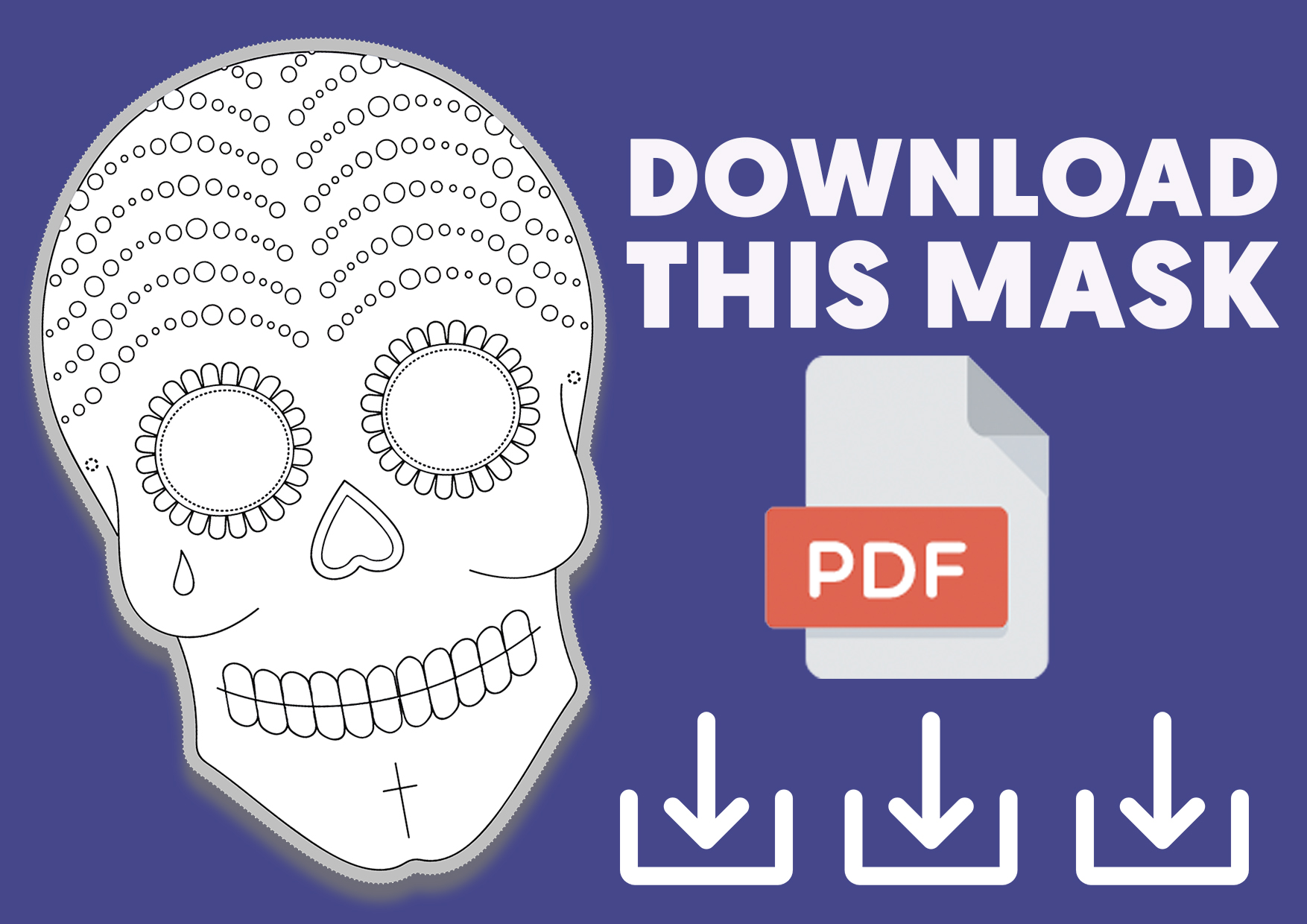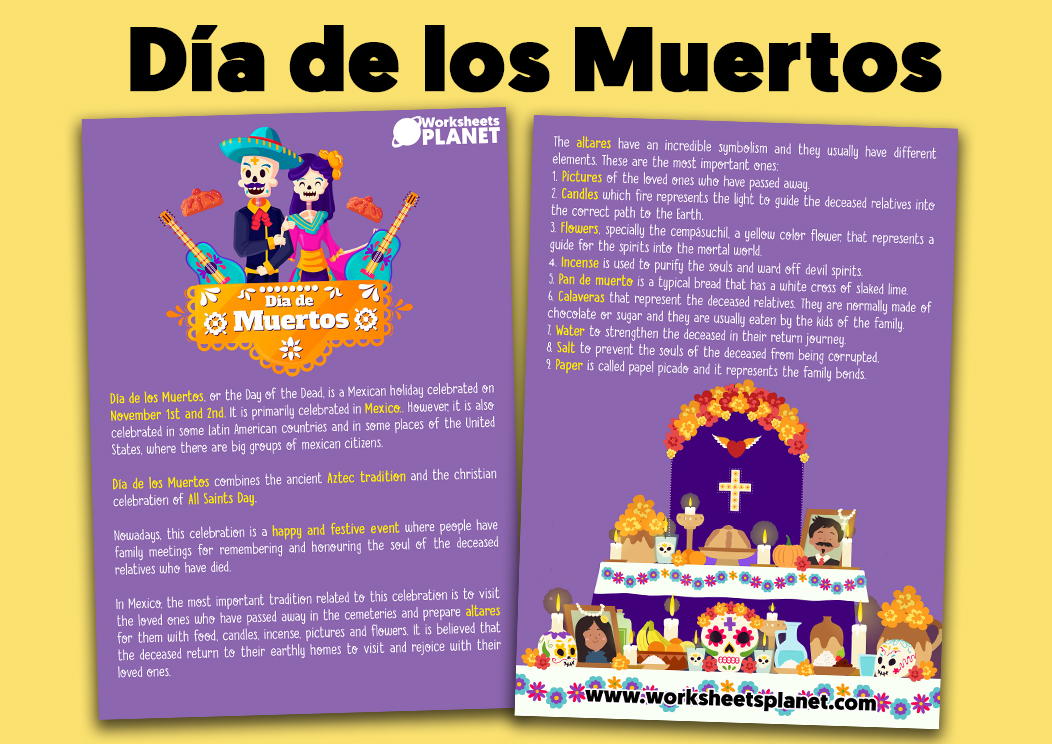Hey Teachers! If your students love carnival, wearing costumes, halloween celebration and all this type of celebration… here you have the PERFECT resource for you and your pupils. This bundle contains a skull mask, a reading with information about Día de los Muertos and papel picado to decorate your classroom.
The skull mask has the perfect size for kids and it is in black and white colour, so they can customize and colour it however they want.
Skulls are very typical in the most famous mexican celebration: El Día de los Muertos. This celebration takes place on November 1st and 2nd. This day, families honour their death relatives and they decorate the famous “altares” in which they put pictures of their beloved ones, flowers, food, candles, etc.
We recommend you to print it in a DINA4 size and in cardboard paper, so it can last longer thanks to the thick material. Once your student have finished decorating it, you should cut the holes on both sides and add any type of cord or elastic.
Are you going to use it? What do you think about this free educational resource?

El Día de los Muertos commonly known as day of the dead is an amazing event which is celebrated in a unique way. There are a few facts about this event that you should be telling your students:
It honors the people gone:
We all lose people who are important to us at some point in our lives. Some people find it difficult to move on. The Mexicans celebrate this beautiful event by honoring the people who have left us. The Mexicans often believe that the people who have left us will thrive as long as they are remembered. They believe that people genuinely pass away when they are forgotten.
The event is two days long:
The Mexicans spend two entire days: the 1st of November and the second to celebrate the loved ones who passed away.
- People wear different types of masks like skull masks to honor those who have left their flesh on Earth and their soul has gone towards the afterlife.
- They genuinely believe that we do not have to agonize over the dead but instead celebrate that they have lived part of their individual lives.
It does not celebrate the dead:
This event is also known as the day of the Dead.
- However, instead of celebrating the dead, the people of Mexico celebrate the life these people have lived.
- It would be unethical of them to celebrate other people passing away, especially their friends and family.
To celebrate, the Mexicans usually employ the use of flowers and skulls as well as butterflies.
It is not Halloween:
Halloween is celebrated in October, not November. However, many people do seem to confuse the two.
- The difference is that Halloween celebrates the actual dead and anything spooky.
- On the other hand, the day of the Dead celebrates people’s lives.
- Plus, you do not get Candy from this Day of the Dead.
It is an ideal celebration to honor our loved ones who we have lost. Children should learn about this day in school because it can help them know about their traditions.
What is Día de los Muertos and why is it celebrated?
Día de los Muertos, or the Day of the Dead, is a Mexican holiday celebrated on November 1st and 2nd. It is primarily celebrated in Mexico. However, it is also celebrated in some Latin American countries and in some places of the United States, where there are big groups of mexican citizens.

What is papel picado and what does it represent?
Papel picado, also known as perforated paper or pecked paper, is a decorative craft made by cutting elaborate designs into sheets of tissue paper. Papel picado is considered a Mexican folk art. The designs are commonly cut from as many as 40-50 colored tissue papers stacked together and using a guide or template, a small mallet, and chisels, creating as many as fifty banners at a time.
Papel picado can also be made by folding tissue paper and using small, sharp scissors. Common themes include birds, floral designs, and skeletons. Papel picados are commonly displayed for both secular and religious occasions, such as Easter, Christmas or the Day of the Dead, as well as during other celebrations, such as weddings or quinceañeras. In Mexico, papel picados are often incorporated into the altars during the Day of the Dead and are hung throughout the streets during holidays.


